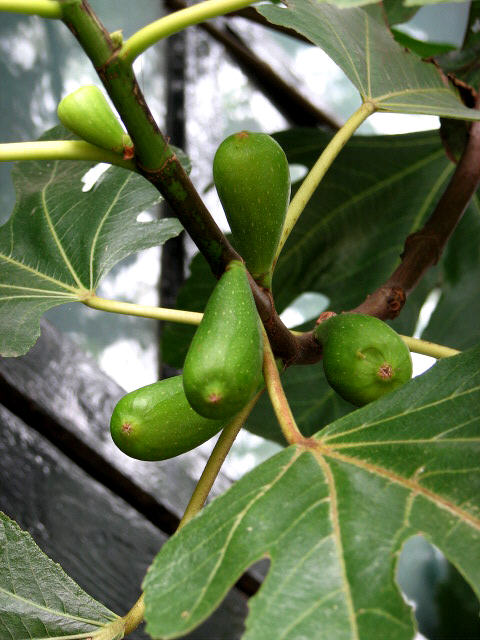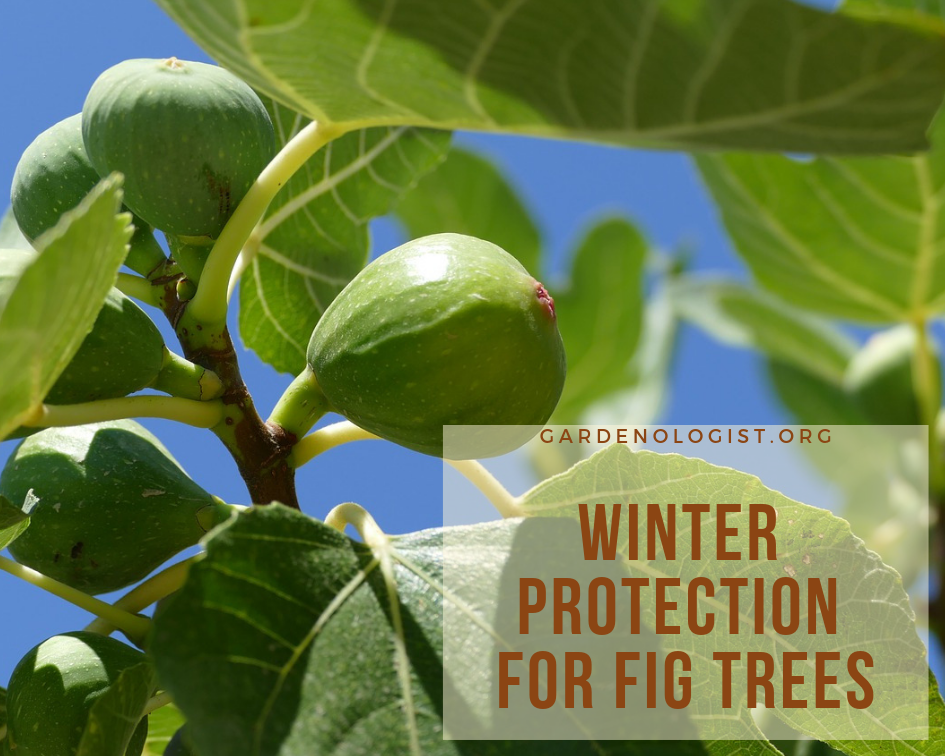This post may contain affiliate links. As an Amazon Associate we earn from qualifying purchases.
Winter protection for fig trees and others that hail from warm climates is a hassle, but necessary.
It’s getting a bit nippy outside and our thoughts are already turning to protecting our cold-sensitive plants. One of my favorites is my fig tree and it’s also one of the most sensitive in my garden.
Fig trees (Ficus carica) hail from hot, dry, Mediterranean climates. They love warm, wet winters.
The operative word there is “warm.”
Which means it’s up to you to provide winter protection for fig trees.
In fact, if your tree is still actively growing, and the temperatures dive to lower than 30 degrees Fahrenheit, it could experience damage. In dormancy, however, the fig tree should be fine to a temperature no lower than 15 F.
If you live outside of USDA zones 8 through 11, let’s take a look at the extra care you should provide your fig tree when winter temperatures dip.
Start the winter protection for fig trees in the fall
Stop fertilizing the fig tree before late summer. Then, just as the season turns, and fall rolls around, stop watering. This will force the fig tree into dormancy.
Check the Old Farmer’s Almanac to determine the first frost date in your area. Keep in mind that this is the average date. The pros at Old Farmer’s Almanac caution that there is a 30 percent chance that frost may occur before this date.
Give yourself plenty of time to prepare the fig tree for winter. Some experts suggest that you wrap the tree just after Thanksgiving. When to do it, though, depends on your climate. Anytime between the fig tree going dormant and the first frost in your area is fine.
Prune it
Wrapping an unwieldy tree is both bothersome and unnecessary. Get out your pruners (we highly recommend the Felco F-31 pruners) and cut away any horizontally-growing branches, those that cross over other branches and those that are taller than the others.
Some of the branches may be too thick or woody for hand pruners so ensure you have loppers nearby as well. The idea is to make the fig tree as compact as possible.
But wait! Before you take the pruners to the tree, sterilize them. A quick, five-minute soak in household disinfectant (Pine Sol, etc.) and water (a 1:3 dilution rate) should do the trick.
Once the tree is compact and there are no branches sticking out further than the others, gather all the branches together and use some heavy twine to tie them together.
Tying and wrapping the fig tree
Before wrapping the tree, it’s important to ensure that there aren’t any reservoirs in the soil around the base of the tree that will allow water to puddle.
The best way to avoid this is by mounding and packing soil about 12 inches high, into a berm, placed 3 feet from the trunk. Then, fill the area inside the berm with a layer of mulch (3 to 4 inches thick should do it).
How much you will wrap the tree and which materials to use depend on your winter temperatures. Start with burlap, wrapping it once or twice around and securing it at the bottom, middle and near the top with twine.
For added insulation, wrap it with bubble wrap next (buy it on Amazon, here). The final wrapping layer should be either heavy-duty plastic or a heavy tarp. Use duct tape to secure this layer and remember to keep the top few inches uncovered to allow for venting.
Now, turn a flower pot or bucket upside down and use it to cover the top. This allows air to circulate while keeping moisture out. Here’s an idea of how it should look, courtesy of The Rusted Gardener.
Nope, it’s not pretty, but it does the trick.
The smaller the fig tree, the easier it is to protect
Shrub-sized trees are easier to deal with in winter. Here’s what you’ll need:
- Four posts
- Chicken wire
- Leaves
- Tarp
Pound the steaks into the ground, evenly spaced, around the tree. Wrap the chicken wire around the outside of the posts and secure it to the posts. Fill the structure with dried leaves to cover the shrub and then use the tarp to cover the structure.

Potted Fig Trees
When the tree goes dormant, remove any fruit that may still be clinging to it and spray all parts of it with a good dormant oil spray. We have had good results with Hi-Yield Dormant Spray (get it at Amazon, here).
Use a solution of 6 tbsp. of the product in a gallon of water, poured into a tank sprayer. Ensure that you reach all parts of the fig tree with the oil.
Follow the cautions and instructions on the product label and wear protective clothing.
Wait until the product dries to move the potted fig tree to its winter location – an area where temperatures remain above freezing but not so warm as to bring it out of dormancy. An unheated garage or basement is ideal.
Move the tree outdoors to a sheltered location two to three weeks before the last frost date. Water it well, until the excess water drains from the bottom of the pot. Then, apply a liquid, balanced fertilizer at the rate of about 1.5 ounces in 5 gallons of water.
Started your holiday shopping yet? Next week we begin our annual holiday gift lists for different types of gardeners!




